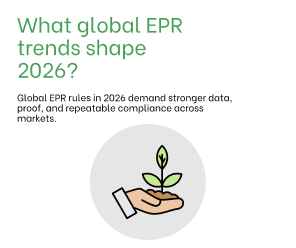Importing goods EU: basic VAT declaration requirements explained
Importing goods EU: basic VAT declaration requirements explained
A company that imports goods for commercial purposes can deduct Import VAT on its VAT declaration. In order to do so, it is necessary to indicate its VAT registration number on the import declaration.
VAT can also be refunded if the following conditions are met:
- Payment was made under the reverse charge or gold scheme;
- Goods were purchased in Northern Ireland from the EU;
- VAT has been paid on imports with the appropriate import certificate;
- The refund is made as a means of repaying bad debts;
- VAT was paid when the goods were exported from a bonded warehouse or free trade zone;
- VAT is shown on self-invoices issued by the company.
How to reflect import VAT in tax return
Postponed VAT accounting includes import VAT in the declaration for the accounting period in which the import occurred. This scheme allows VAT to be claimed and reclaimed at the same time, which simplifies cash flow and reduces bureaucracy. However, it is also possible to reclaim VAT paid on imported goods as input tax (input VAT) if the company is registered as a VAT payer.
If a company is not registered as a VAT payer, it cannot refund VAT on imports. In such a case, VAT must be paid on imports, with no possibility of refund through a declaration.
Example: A company is registered as a VAT payer in the UK and can account for import VAT on its VAT return for goods imported into the UK (England, Scotland, Wales) from outside the UK, and for Northern Ireland from outside the EU and the UK.
The total deductible value-added tax (VAT) charged on business purchases is called ‘input VAT’ for the accounting period. It also includes VAT refunded for the period on import transactions accounted for through the VAT deferred accounting mechanism.
The following cases cannot be claimed for refund of import VAT in a VAT return:
- if the goods are imported for non-commercial purposes;
- if there is no proper tax invoice to support the claim.
It is necessary to select whether immediate payment is made or whether the duty drawback account is used when completing the import declaration.
Filling in the customs declaration to record import VAT in the VAT declaration
Customs Declaration:
- HS Code: Enter the classification code for the imported goods according to the Harmonized System (HS) nomenclature.
- Quantity of Goods: Enter the quantity of goods using the appropriate units of measurement.
- Commercial Value: State the commercial value of the goods, which is usually the actual price or the price payable.
- Country of Origin: Indicate the country where the goods were produced.
- Customs procedure: Depending on the purpose for which the goods are to be used, select the appropriate customs procedure (e.g. release into free circulation).
Additional Information:
- Attach copies of the necessary licenses or permits for importing the goods.
- Submit the necessary safety certificates or declarations of conformity.
- Depending on the nature of the goods, additional documents (invoices, packing lists, certificates of analysis) may be required.
VAT (Value-Added Tax)
Usually import VAT on the value of the goods plus any customs duties must be paid. In some cases, VAT can be reclaimed under the reverse charge scheme.
Customs Duties
Customs duties are calculated based on the tariff rates for the HS code and the country of origin of the goods. If the goods fall under preferential trade agreements, reduced or no duties may be available.
Other Charges:
Depending on the nature of the goods, other taxes or charges such as excise or anti-dumping duties may be levied.
Customs Clearance
It is recommended that the company appoint a customs broker to handle customs clearance on company’s behalf. Ensure that all necessary documents are filed with the customs authorities in a timely manner.
Electronic Filing
Many EU countries require electronic filing of customs declarations through specialized systems. Customs regulations can be complex and vary depending on the type of goods, country of origin and company’s specific situation.



